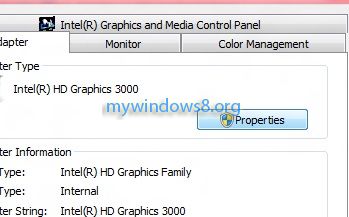Graphics Card Windows 8
This document describes how to install an updated version of the graphics driver on a computer that runs Windows 8, Windows 7, or Vista. The graphics driver is system software that controls a computer's video adapter (sometimes called a video card or GPU). On a computer that does not have an actual video adapter, the graphics driver controls the part of a computer's motherboard called a graphics chipset. The graphics chipset is sometimes called an onboard, built-in, or integrated graphics controller or chipset.
More Graphics Card Windows 8 images.
Windows 8 Download
Disclaimer: Adobe does not support the installation of graphics drivers and provides the information in this document only as a courtesy. For assistance with the installation of a graphics driver, contact the manufacturer of the computer or the manufacturer of the computer's video adapter. Click the link to download the driver installer. Generally, Adobe recommends that you download the most recent driver version that is available. However, Adobe recommends that you avoid installing 'beta' or other pre-release driver versions.


Important: Most manufacturers provide different driver installers for 32-bit editions of Windows 7 and Vista than for 64-bit editions. Download the driver for the edition of Windows 8, 7, or Vista that runs on the computer. To identify the edition installed on the computer, see (kb407673). Updating the graphics driver can resolve display issues in Adobe applications. In some cases, updating the graphics driver can resolve stability issues in Adobe applications.

Display issues include, but are not limited to, the following:. A black, gray, or transparent area appears instead of the expected video or image. Menus, panels, or other interface elements remain on the screen after moving or closing them instead of disappearing instantly. Interface elements, such as menus or icons, are not displayed or appear on the screen more slowly than expected.